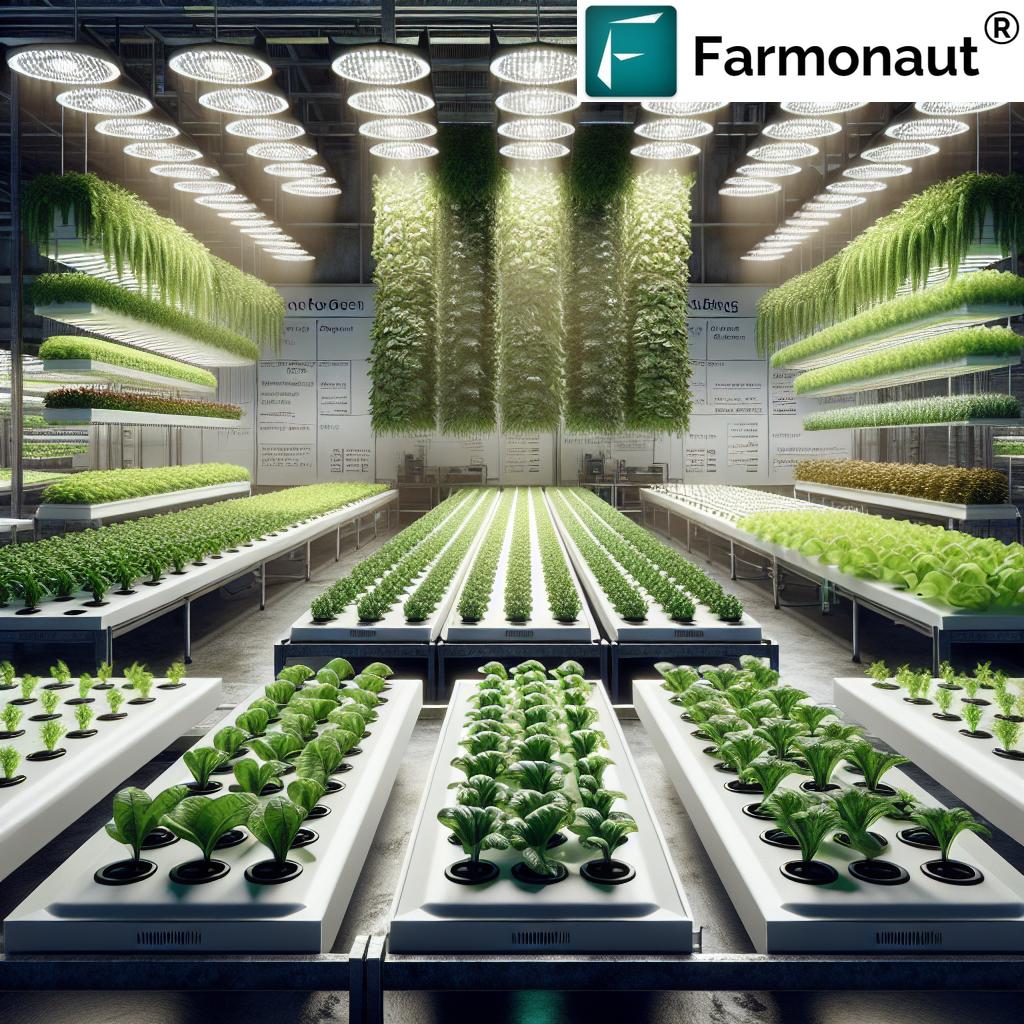Agricultural Biologics: 7 Ways to Boost Sustainability
“Biological crop solutions can increase yields by up to 20% while reducing chemical pesticide use by 30%.”
What are Agricultural Biologicals? Sustainable & Natural Crop Protection Solutions
Agricultural biologicals—also known as biologicals or agricultural biologics—are natural products derived from living organisms or their metabolic processes. Utilized in modern agriculture, they serve as eco-friendly alternatives to conventional chemical inputs, helping to enhance crop productivity, manage pests and diseases, and improve soil health organically.
Demand for sustainable agriculture and natural crop protection solutions has never been greater. Farmers, agribusinesses, and consumers are seeking practices that boost resilience, maintain high yields, and steward our environment for future generations. Agricultural biologics have become integral to these systems by offering benefits of biological farming that are both powerful and sustainable.
This article explores the core types of biologicals used in farming, details their benefits and mechanisms, and explains seven ways to boost sustainability by integrating biological products for agriculture. We’ll discuss market trends, challenges, and practical approaches to maximize performance and return on investment using these innovative solutions.
Categories of Agricultural Biologicals: Types & Core Benefits
Agricultural biologics are primarily classified into three main categories based on their origin, function, and use in modern farming practices. Each category offers unique ways to enhance sustainable farming and manage pests, improve yields, and strengthen soil health naturally.
1. Biopesticides
- Definition: Biological products used to control pests. These include microorganisms (bacteria, fungi, viruses), plant extracts, and insect pheromones.
- Mode of action: Biopesticides act by inhibiting, repelling, or disrupting pests, insects, pathogens, and diseases—often with novel mechanisms not found in chemical pesticides.
- Examples: Bacillus thuringiensis (bacteria), Trichoderma (fungi), neem oil (extract), synthetic moth pheromones.
2. Biofertilizers
- Definition: Natural inputs containing beneficial microorganisms that promote plant growth by improving nutrient acquisition.
-
Key groups:
- Nitrogen fixers: Convert atmospheric nitrogen into plant-usable forms.
- Phosphate stabilizers: Help retain phosphate in accessible forms.
- Phosphate mobilizers: Free up phosphate bound in soils.
- Micronutrients: Enhance access to trace elements.
- Plant growth-promoting rhizobacteria (PGPR): Aid nutrient uptake and stress tolerance.
- Examples: Azotobacter (nitrogen fixer), Bacillus megaterium (phosphate mobilizer), zinc-solubilizing bacteria.
3. Biostimulants
- Definition: Substances or microorganisms that stimulate natural plant processes to enhance nutrient uptake, abiotic stress tolerance, and quality.
-
Main types:
- Seaweed extracts
- Humic and fulvic acids
- Amino acids and peptides
- Beneficial microbial consortia
- Key benefit: Improved yield, quality, and resilience with lower environmental impact.
Benefits of Biological Products for Agriculture: Why Go Organic?
The adoption of agricultural biologics is rapidly accelerating worldwide due to the broad spectrum of sustainability, productivity, and soil health benefits they offer:
- Improved Soil Health Naturally: Biofertilizers and biostimulants enhance soil structure, increase organic matter, and support beneficial microbial activity—making soils more resilient and fertile.
- Reduced Chemical Dependency: Providing alternatives to chemical pesticides and synthetic fertilizers, biologicals help reduce environmental pollution and support biodiversity by decreasing reliance on chemicals.
- Enhanced Crop Productivity: Biostimulants make plants more resilient to abiotic stress (drought, heat, cold), raising yields and improving the quality of produce.
- Sustainable Pest and Disease Management: Biopesticides control pests and diseases with lower risk to non-target organisms, supporting novel modes of action and resistance management strategies.
Embracing biological inputs is not just about producing “organic” crops but about creating regenerative, sustainable agriculture systems that can thrive into the future.
“Over 60% of farmers using agricultural biologics report improved soil health and long-term sustainability.”
7 Ways Agricultural Biologics Boost Sustainability
Let’s explore the seven primary ways that agricultural biologicals and natural crop protection solutions are creating a more resilient, productive, and environmentally friendly future for modern farming.
1. Replacing Synthetic Chemicals With Natural Alternatives
- Biologicals such as biopesticides and biofertilizers offer alternatives to chemical pesticides and synthetic fertilizers.
- They reduce pollution and environmental damage, supporting safer produce and biodiversity in the ecosystem.
- This shift decreases inputs cost for farmers and meets consumer demand for “cleaner,” more organic foods with traceable supply chains.
For example, using microbial solutions for agriculture can reduce the need for conventional pesticide sprays, limiting chemical residues and the risk of resistance.
2. Improving Soil Health Naturally With Biofertilizers & Biostimulants
- Biofertilizers add beneficial microorganisms to the soil, increasing organic matter and soil fertility.
- Biostimulants encourage root growth, microbial activity, and soil structure stabilization—making soils more resilient to erosion, drought, and compaction.
- These products promote nutrient cycling, optimize fertilizer uptake, and **reduce runoff**.
Our Farmonaut satellite-based farm management tools provide real-time maps of soil health and moisture, empowering farmers to track changes and optimize the use of biological products for agriculture.
Learn more about carbon footprinting and sustainable soil management with Farmonaut.
3. Enhancing Nutrient Uptake & Use Efficiency
- Certain biologicals, such as phosphate-mobilizing bacteria and PGPR, help free up soil-bound nutrient reserves and convert them into forms plants can use more efficiently.
- This improves nutrient use efficiency, meaning fewer inputs are wasted, and there’s less environmental impact from leaching or runoff.
- Plants show increased vigor, growth, and productivity as a result of more balanced nutrient supply.
By integrating precision data tools such as Farmonaut’s advisory and monitoring systems, farmers can apply biofertilizers exactly where they’re needed, optimizing results at scale.
4. Sustainable Pest and Disease Management
- Biopesticides target specific pests and diseases with mechanisms (e.g., bacterial toxins, viral infections, or pheromone disruption) rare in conventional chemistry.
- These novel modes of action slow down resistance development and are often safe for beneficial insects (pollinators, predators).
- Lower non-target impact means sustainable pest and disease management with fewer collateral effects on biodiversity.
Farmonaut supports farmers with satellite-based early warning systems for pest outbreaks, allowing for proactive use of biopesticides at the right time and place.
For a deeper dive into lowering crop risks, our satellite-verified insurance solutions help reduce losses—see details about Farmonaut crop loan & insurance technology.
5. Resilience to Abiotic Stressors
- Abiotic stressors—such as drought, salinity, and temperature extremes—are increasingly threatening global agriculture.
- Many biostimulant products—like seaweed extracts and specific rhizobacteria—enhance plant tolerance to these stresses by priming plants’ metabolic pathways and antioxidant systems.
- Plants treated with biostimulants recover faster after stress events and show consistent quality even in harsh conditions.
Adopting climate-smart biological solutions is vital for farmers adapting to a changing environment. These strategies increase stability and reduce potential crop failures season after season.
6. Supporting Biodiversity and Environmental Health
- The replacement of broad-spectrum chemicals with targeted biologics allows beneficial organisms, such as pollinators and predators, to thrive.
- Agricultural biologicals support greater diversity of soil, plant, and insect life, which in turn enhances farm system resilience.
- Healthier soils and natural enemies lead to fewer pest outbreaks and a more robust ecosystem.
This is particularly crucial for long-term sustainability—and is central to regenerative agriculture practices worldwide.
7. Reducing the Carbon Footprint of Agriculture
- Biological inputs lower greenhouse gas emissions by decreasing synthetic fertilizer production and use.
- Enhanced soil health boosts carbon sequestration, helping mitigate climate change.
- Monitoring these changes is made possible by digital solutions like Farmonaut’s carbon footprinting platform, offering actionable insights for every farm.
These direct and indirect effects combine to make agricultural biologicals a cornerstone of the fight for sustainable, climate-smart farming.
Biological Products for Agriculture: Comparative Benefit & Impact Table
| Biological Solution | Mode of Action | Estimated Yield Improvement (%) | Soil Health Impact (1–5 scale) |
Eco-Friendly Rating (1–5 scale) |
|---|---|---|---|---|
| Microbial Biopesticides (e.g., Bacillus, Trichoderma) | Disease suppression, pest inhibition | 8–15% | 3 | 5 |
| Plant Extract Biopesticides (e.g., Neem, Pyrethrum) | Pest deterrence/disruption | 7–12% | 2 | 5 |
| Nitrogen Fixing Biofertilizers | Convert nitrogen for plant uptake | 12–20% | 5 | 4 |
| Phosphate Mobilizing Biofertilizers | Release bound phosphate in soils | 10–18% | 5 | 4 |
| Micronutrient Solubilizing Bacteria | Enhance micro nutrient availability | 7–15% | 4 | 4 |
| Seaweed & Humic Biostimulants | Stimulate plant growth / stress resilience | 10–16% | 3 | 5 |
| Plant Growth-Promoting Rhizobacteria | Enhance root growth, nutrient uptake | 10–18% | 5 | 5 |
Challenges and Considerations: Moving Toward Widespread Adoption
Despite their significant benefits, agricultural biologicals still face several practical challenges and considerations that must be addressed for mainstream adoption and maximum effectiveness:
- Performance Variability: The effectiveness of biologicals can shift due to environmental conditions (temperature, humidity, soil quality).
- Shelf Life & Storage: Many biological products require careful storage to maintain efficacy, which can present logistical hurdles, particularly in regions lacking cold chains.
- Regulatory Hurdles: The approval and registration process for biologicals often varies regionally and can delay the rollout of promising products.
- Cost & Awareness: While some biologicals reduce costs over time, initial adoption may involve higher investment or training, and lack of information can be a barrier for farmers.
- Integration Into Existing Practices: Biologicals may require changes to application methods or timing, and need to be integrated thoughtfully with other inputs for best results.
Tools like Farmonaut’s data-driven advisory and automation solutions can help optimize the use of biologicals by providing science-based recommendations on timing, quantity, and application zones—improving consistency.
Market Trends and Future Outlook: The Growth of Biologicals
The agricultural biologicals market is experiencing robust, global growth, driven by:
- Consumer demand for chemical-free, organic foods and transparent supply chains.
- An ongoing shift to sustainable farming practices by growers and agribusinesses.
- Government and retailer focus on reducing synthetic agrichemicals, promoting natural crop protection solutions.
- Technological advancements such as satellite-based monitoring, AI-driven farm advisory, and digital traceability platforms.
Today’s biological industry leaders are developing advanced products with greater specificity, speed, and resilience—using data and digital agriculture to fine-tune usage and maximize benefits.
The future of agricultural biologics will be shaped by:
- Integration with digital tools (AI, remote sensing, blockchain traceability).
- Personalized recommendations for site-specific application—something platforms like Farmonaut enable through satellite imagery and AI-driven insights.
- Closing the loop between productivity, profitability, and sustainability—helping farmers increase crop yields sustainably while strengthening their long-term viability.
If you’re a developer, researcher, or agribusiness interested in integrating such advanced agricultural data or images directly—explore our Farmonaut API and developer documentation.
How Farmonaut Drives Sustainability With Precision & Biologicals
As agricultural technology rapidly evolves, we at Farmonaut empower farmers, agribusinesses, and governments to make the most of sustainable farming practices and biological products through innovation:
- Real-Time Crop Health & Soil Monitoring: Using multispectral satellite imagery, we help farmers track changes in soil health, vegetation vigor, and moisture—enabling targeted application of biofertilizers and biostimulants.
- AI-Powered Farm Advisory: Our Jeevn AI system offers instant, field-specific guidance to optimize biological product usage for maximum yield and sustainability.
-
Blockchain Traceability: With farm-to-market transparency, we help certify food origins and input use, supporting organic certification and consumer trust.
Discover how blockchain-based product traceability benefits food systems. -
Resource & Fleet Management: Our management tools assist farms and agribusinesses in reducing costs, improving eco-efficiency, and optimizing operations across logistics, fertilization, and disease management.
Enhance resource management and reduce farm operational overhead. - Scalable Subscription Model: Our platform solutions are accessible to farms of all sizes—streamlining sustainable practices and biological inputs for everyone, everywhere. Explore our large-scale management app for plantations or government/NGO programs.
By making precision insights affordable and actionable, we support the sustainable adoption of agricultural biologicals worldwide.
Frequently Asked Questions (FAQ)
What are agricultural biologicals and how do they differ from conventional chemicals?
Agricultural biologicals are products derived from living organisms or their processes—including microbes, plant extracts, and more. Unlike synthetic chemicals, they offer natural solutions to enhance crop growth, nutrient uptake, and sustainable pest and disease management, with reduced environmental impact.
How do biopesticides and biofertilizers work?
Biopesticides use natural organisms or substances (like bacteria, fungi, or plant extracts) to target and control pests or diseases. Biofertilizers contain beneficial microorganisms which improve nutrient acquisition by fixing nitrogen or releasing bound soil nutrients, promoting healthy plant growth.
Are biologicals as effective as chemical pesticides and fertilizers?
When used appropriately—with attention to timing, application, and environmental conditions—biologicals can rival or exceed the results of chemicals, especially over the long term. They offer extra benefits for soil health, resistance management, and sustainability.
Do agricultural biologicals work in all types of farms?
Yes, they can be adapted to various soils, climates, and farm sizes. Integration with digital monitoring and advisory—like that offered by Farmonaut—enhances both their adoption and effectiveness across diverse operations.
How can I monitor the impact of biologicals on my farm?
Modern tools such as Farmonaut’s satellite platform allow you to track changes in crop health, soil properties, and resource usage in real-time—making it easier to adjust practices for optimized performance.
Try our mobile and web tools for real-time farm monitoring and recommendations.
Are there any limitations or challenges to using agricultural biologics?
The main challenges are performance variability depending on site conditions, the need for proper storage, and understanding regional regulations. Technology and ongoing research—like data-driven advisories—are helping overcome these barriers.
Conclusion
Agricultural biologicals are rapidly transforming modern agriculture, offering scalable, eco-friendly, and effective alternatives to conventional chemical inputs. By leveraging the power of living organisms and their processes, they enhance crop productivity, improve soil health naturally, and manage pests and diseases sustainably.
Despite certain challenges, advances in biological products for agriculture—coupled with digital technologies like satellite-based monitoring, AI, and traceability systems—are paving the way for smarter, more resilient, and sustainable farming practices worldwide.
With effective biofertilizers and biostimulants, natural crop protection solutions, and precise, real-time farm management tools from Farmonaut, farmers can increase crop yields sustainably and strengthen their long-term profitability. As consumer preference shifts to sustainability, biologicals represent the future of farming, merging productivity with regeneration.
Ready to harness the benefits of biological farming? Explore Farmonaut’s suites for precise, affordable, and sustainable agriculture. Stay ahead with data-driven, microbial solutions for agriculture and join the movement toward a thriving, eco-friendly future.














